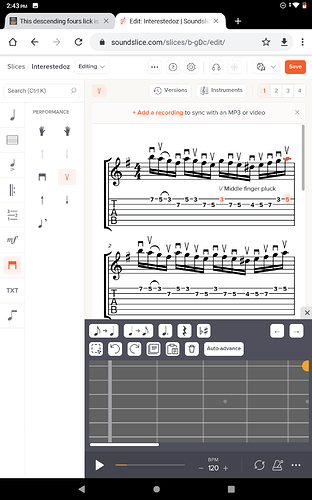This sounds awesome, much better than I was expecting based on your description. This is a good example of objectively recognizing all the things you’re doing right and appreciating those. A lot of people would like to have this level of ability.
I don’t think you’re failing at anything here, per se. I just think you’re trying to play the pattern with single escape motion, possibly DSX, because I see the little thumb motion every time you have to do certain string changes, which looks like a helper motion. Nothing wrong with a helper motion strategy, that’s what Batio does.
Do you know what escape you’re making, have you filmed yourself up close while doing all-evens single escape licks starting on each pickstroke:
If one method feels easier and involves no stringhopping or helper motions, then that is the primary escape you are using. You can also film it and look. You would need a down the strings angle and at least 120p video, preferably 240p as any iPhone will do. You’re not going to learn much from this perspective.
Moving forward, if you want to do this kind of phrase with wrist motion and no (or minimal) helper motions then you need to know whether you are actually capable of making both escapes or if you’re just doing the primary escape (from the previous test) the whole time. If it’s single escape the whole time, then there is no point in trying “fix” individual wrong notes because wrong notes aren’t your problem, the motion is the problem. What you need is more motion capability.
The way you learn new motions is you change something about your form and make more medium-fast and fast attempts to see if you any of these changes produce the motion you want. In this case you want to see the other escape happen, where the pick cleanly does the other string change. Very often this includes making a double escape pickstroke at that moment, somewhere inside the phrase. If you see that, then the changes are correct and you can keep them. If the motion looks exactly the same then you didn’t change anything. Rinse, repeat.
In short, you can’t fix wrong notes at the “going on autopilot” speeds, you can only make form changes and evaluate how it sounds, feels, and looks, preferably in slow motion.
Also, and this is important: You need to do this while playing a wide variety of phrases on different groups of strings, up to and including phrases that have one note on a string, like alternate picked arpeggios. It’s hard to predict which phrase is going to produce the desired motion, and when it does, that ability may translate to other phrases in the group. This takes time. Months, or more, as you experiment with all this vocabulary.
TLDR make form changes to try and get the new / unfamiliar motion to happen. Note the form changes that produce the correct results. Keep any that work, discard any that don’t. When you find changes that work, you can then slow down a little bit and try to get more notes right, while maintaining some of the “correct motion” feel that you learned from the faster experiments. Because at that point, you have something you can actually work with.







 He does it all over, Minor Swing, just let’s forget I even said anything.
He does it all over, Minor Swing, just let’s forget I even said anything.  !
!